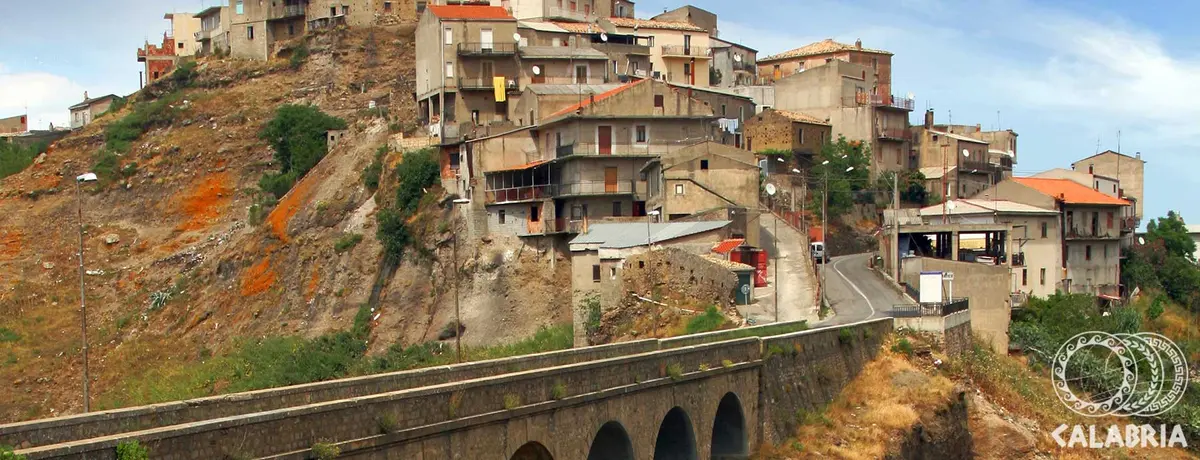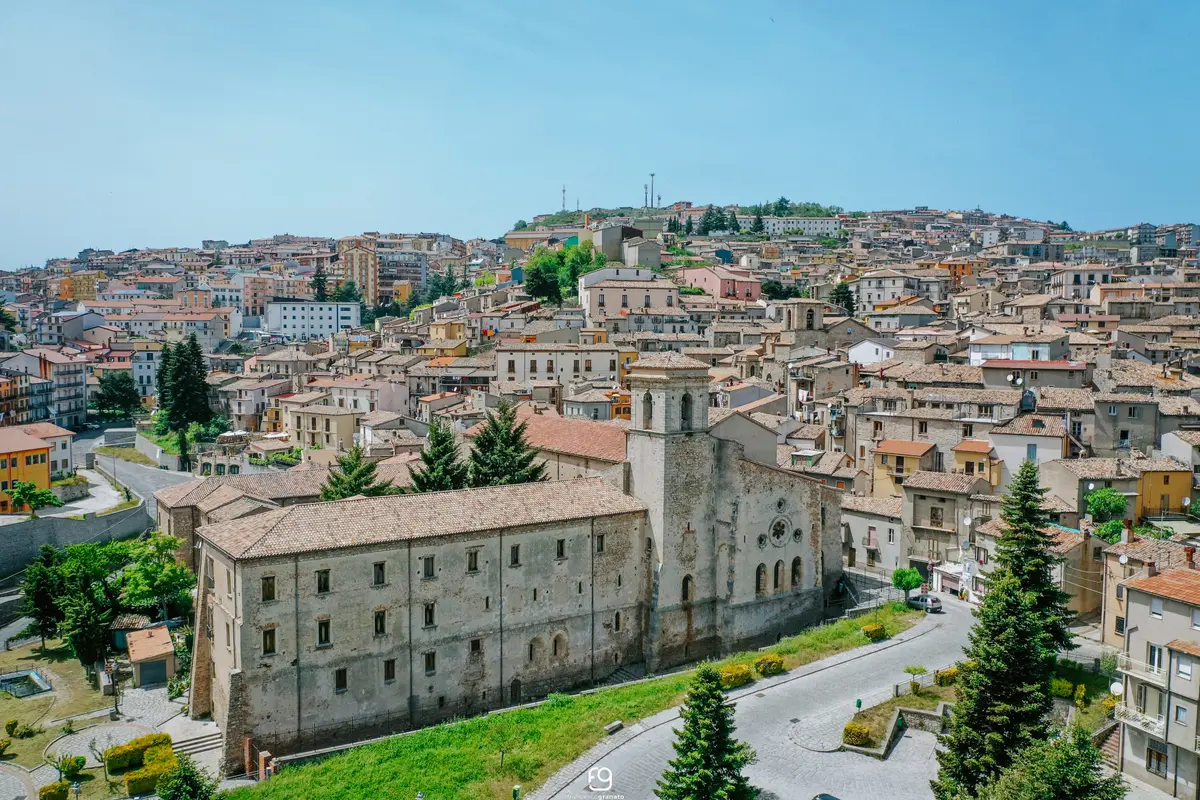Castelsilano
Castelsilano, a viewpoint overlooking the Neto valley

Mountain
Castelsilano is the last Crotonian outpost before encountering San Giovanni in Fiore and thus, the province of Cosenza. Its natural position, overlooking the entire Neto valley and therefore the Ionian Sea, has always been the basis of its added value and more typically, has led to coin the expression "Terrazza della Provincia di Crotone” (Viewpoint of the Province of Crotone) that accurately describes its geographical features.
From Castelsilano, a panoramic view of the entire Marchesato can be enjoyed, together with its history, traditions and culture made up by layers of centuries, myths and legends.
From Castelsilano, views of the entire Neto valley can be enjoyed, with its history and culture made up by layers of centuries, myths and legends.
Although the inhabited town centre is located at 960 metres above sea level, its area is crossed by the Lese river, which drops down by 300 metres when it encounters the Neto river. This other peculiarity adds value to an area with a wide variety of flora and fauna as well as natural sources of sulphur water and Karst caves. In contrast to this natural rocky experience facing the sea is the fact that Castelsilano is home to the Mediterranean’s last great forest: the Sila. Its central position places it at the same distance from both the ski slopes of Lorica and Camigliatello as well as the beaches of Strongoli and Crotone.
Karst Caves
The area of Castelsilano is rich of caves suitable for speleology, of which the most important is the Grotta di Samourì or Grave Grubbo, which extends for many kilometres deep into the earth. The cave was identified in1989 over the course of a survey carried out in the area by some speleological groups. The cave opens into a wide sink hole, ending, in its deepest area, in a deep pit of approximately 11 metres. It descends along a frozen chalky wall until it reaches the base of the vertical, completely invaded by land and large boulders. The inner path of the cave is filled with bends and jumps that at certain points during heavy rainfall periods, cause small waterfalls of a modest size. Continuing along the path, the presence of large water basins, formed at various levels in respect to the base with successive rocky terraces, is a delightful sight. At the end of the journey, the difference with respect to the entrance is 70 metres; the greatest that has so far been measured in a cave of the Alto Crotonese. Quite likely, the cave is connected to another cave discovered recently located downstream and currently under exploration and study.
Sights of the old town centre
Worthy of a visit is the Chiesa Madre Maria SS.Immacolata (main church of Saint Mary Inmaculate), which preserves the holy water stoup in granite of the Sila mountains, a papal coat of arms placed over the main entrance and precious sacred garments finished in gold. With the last restoration works, precious mosaics of the Florentine school were added that greatly improved its appearance. The Chiesetta della Madonna della Campagna has a statue by the famous Demetz Ortisei and is a pilgrimage destination, especially in summer due to the solemn festivities which take place on the second Sunday of August. Nine days prior to the festivities, the statue of the SS. Vergine della Campagna is brought at night time to the main church, the Chiesa Madre, where it remains for the entire nine days. The day of the festivities the statue is carried through the town’s streets, accompanied by a musical band and a long procession of worshippers. Late in the evening it is then returned to its Church accompanied by a great torchlight procession. The Ceppo dei Fratelli Bandiera, located in the town of Stragola, was built to commemorate the place where on 19 June 1844 Attilio and Emilio Bandiera were captured, arrested and brought before to S. Giovanni in Fiore and then transferred to Cosenza, where, following a trial and handing down of a sentence, they were executed in Vallone di Rovito on 25 July 1844.
Handicrafts
It is still possible to find in Castelsilano some handicrafts that have been made following ancient craft traditions. The most popular product of local handicrafts are always blankets made by a loom and by hand. Interwoven fabrics, in their raw form even with the textile fibre obtained by macerating the broom plant, today are worked with the finest materials and reproduce original local designs that invoke a very ancient tradition. Some of the older some weavers still retain the tradition of dyeing wool naturally with vegetable fibres and vitriol (copper sulphate). The art of goldsmiths is another typical expression of Castelsilano's craftmanship. Many families, in fact, have handed down the art of making fine gold jewellery. The most typical product is represented by the "Jennacca"; a necklace composed of many small spherical grains of gold. This necklace, as per tradition, is still given by the mother-in-law to the daughter-in-law at the end of the marriage ceremony. Every Jewel has a decorative pattern that has the purpose of conveying both beauty and elegance and allowing to understand a person’s taste; it is for this reason, that jewels are mostly seen as “historical documents” that evidence the development of popular culture. Castelsilano still has a large number of shipwrights today; so much so as to be remembered, together with only a few other locations of Calabria, in a study drawn up by Consorzio vicentino del Legno as a famous wood cutting location since 1800s.
The Donkey Races
The event originated from an ancient tradition that has taken place up to the early 1950s in the towns of Presila and Sila. In fact, during the celebration of the patron saint’s festivities, these competitions were organised with the best donkeys of each town and were capable of involving and entertaining its entire population. The donkey, very widespread in that type of agro-pastoral economy, was not just the means of transport used to come and go from the fields but the fulcrum of the entire domestic economy. The reinterpretation of this "palio dei poveri” (bet among the poor) has meant, firstly reinterpreting this tradition and then making a small but significant tribute to this eternal and faithful worker; unforgotten symbol that represents Calabria's hard-working people.
Gastronomy
The typical cuisine of Castelsilano, which boasts areas of real excellence, is represented by oil, wine and farming with the consequent production of meat and cheese. The secular tradition of the cultivation of the olive tree, which is the basis of Mediterranean cuisine, has ancient origins and was always highly practised in Castelsilano, which produces a very low-grade acidic olive oil. This distinctive feature has also been acknowledged by the European Community which has recently granted the protected designation of origin label DOP. The vineyards that reside in the hilly area offer ripe and healthy grapes, both of the white and black varieties, obtained by means of ancient wine-making techniques. Castelsilano’s closeness with Cirò, the land of wine par excellence, has greatly influenced it. There are also many farms that breed beef cattle, sheep, goats and pigs. The processing of pork meat is a local family affair and the town produces salami types of great interest.
The production of cheese with sheep and goat's milk according to old recipes is tied to the thriving activity of farming, but always with maximum precautions in terms of hygiene and safety.
Useful information
What to know about Castelsilano
Where to Sleep
There are 1 available accommodations.
Infopoint Castelsilano
Castelsilano
No result









